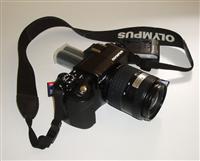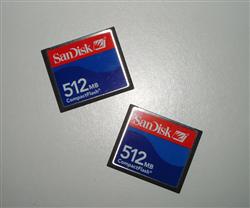 Introduction to Technical Photography and Photographic Equipment
Introduction to Technical Photography and Photographic Equipment
- Learn about the Technology behind Photography.
- Understand how images can be recorded on film or electronically
- Build a foundation for both taking better photos, and making better use of photographic equipment
The 20th Century saw the steady refinement of photography.
The 21st Century arrived and so too did digital imaging, which had been forging its place in parallel with the personal computer, offering a high tech, simple to use alternative to film.
It has been a dramatic transformation, the revolution is almost over, digital will prevail, film may one day disappear. The dust is settling and improvement continues, but at a slower pace. Sensitivity of digital sensors will continue to improve to tweak colour accuracy, and the depth (available range) of colour, so too will storage and retrieval. As computer size and speed increases image size and quality will almost inevitably grow and eventually surpass the capability of film. Cameras may become smaller still and lighter; ease of use will be improved further. Yet, despite the differences in technology, despite the way that the camera records the image, despite the way we now seem to prefer to view images on computer screens and save on a disk or microchip, despite all these changes the activity of photography by a photographer has largely remained the same, it may be easier, quicker, less hassle but the basic principle and underlying skills of technique and creativity are largely unchanged, we still need a light sensitive surface in a dark chamber on which to record the image, at the front of the chamber there is still a necessity for a hole, fitted with a lens (unless we are performing pinhole photography) to point at the subject we wish to photograph so that light can pass through to form the picture on the sensitive surface in the dark chamber. We need a method of opening and closing the hole to control the duration of the light falling on the sensitive surface.
This course explores the technology of photography as it applies to film and digital and, where difference exists, will draw attention to the variation.
Course Content
There are eight lessons in this course, as follows:
 1. Image Formation
1. Image Formation
Interaction of light with matter (Reflection, Absorption, Transmission, Deviation, Dispersion), Lenses (6 main types -Double Convex,. Plano Convex etc), Understanding movement of light, Image formation in a camera.
2. Lighting
Characteristics of light (Spectrum characteristics, Overall Output, Consistency, Efficiency, Illumination, Quantity, Economy etc); Natural Light, Artificial Light (direction, intensity and colour); Generating Light (From Burning, Heating, Spark or Arc of Electricity, Electrical Discharge); Lighting Equipment (Tungsten Filament Lamps Tungsten Halogen Lamps, Fluorescent Lamps, Flashbulbs.
3. Sensitometry A (ie. Film Sensitivity)
How a Negative is Created; Film Contrast Characteristics (medium, low or high),Resolving & Grain, Speed, Light Meters
4. Sensitometry B
Luminance range, Scatter affect, Under & over exposure, Callier coefficient,, Diffuse & parallel illumination
5. Understanding Colour
White light, Primary colours, Subtractive colour, Short & long wavelengths, Colour differences in negative and positive film.
6. Chemistry of Colour Photography
Colour chemistry, Colour image development, Alternative methods of image formation and processing.
7. Optical Filters and other activities
Applications for different filters, for special affects, comparing with and without filters.
8. Lenses
Wide angle Lenses, The Standard Lens, Telephoto Lens, Zoom and Macro Lenses; Applications for different lenses
AIMS
- Describe in technical terms, how an image forms when a photograph is taken.
- Explain the nature of light and how this relates to the finished photographic product.
- Describe how sensitivity of a photo sensitive surface and its development affect the photographic image.
- Explain sensitivity relates to development affect the photographic image.
- Explain the composition and manipulation of white and coloured light to create different photographic images.
- Discuss the chemical process that occurs in producing a colour film photograph.
- Explain how the photographic image may be manipulated by using optical filters or other camera attachments, other than lenses.
- Explain how the photographic image may be manipulated by using lenses.
Extract from the Course....An Introduction to Digital Sensitometry
 Because a camera’s sensor produces no negative, does not suffer from reciprocity and has a spectral sensitivity very similar to that of the human eye, does it follow that there is no longer a use for sensitometry in digital photography? Of course there is and we actually use it all of the time in Photoshop, Paint, GIMP if you are using Linux or whatever image manipulation program and operating system combination you happen to prefer.
Because a camera’s sensor produces no negative, does not suffer from reciprocity and has a spectral sensitivity very similar to that of the human eye, does it follow that there is no longer a use for sensitometry in digital photography? Of course there is and we actually use it all of the time in Photoshop, Paint, GIMP if you are using Linux or whatever image manipulation program and operating system combination you happen to prefer.
In Photoshop, for instance, the Levels tool produces a representative histogram of the tonal range of the positive image. A dark image will have most of the tonal distribution towards the left of the histogram and a bright one to the right. An image with an even distribution of tones will have them spread throughout the histogram. This is a representation for the positive image and in the sensitometry you have looked at so far, with film, you have considered the negative. So where in Photoshop do we find the Negative? The answer is in the Curves tool.
If you were to open the Curves, you would not see one that you were immediately familiar with. The curve you see is a straight line from bottom left to top right. In the ones you have been used to so far, there is a lag phase, a toe, a straight line area and a shoulder before flattening off at D-Max. These portions of a film’s characteristic curve are not design features, they are flaws, if there was such a thing as the perfect film, it would have a characteristic curve exactly the same as the one in the Curves tool.
Where this curve further differs from the ones you are used to is that it is not the fixed type produced by a photographic process, because a sensor is not a piece of film, it’s for a digital image. So, in the Curves area of Photoshop, or any other image manipulation program, you are looking at the characteristic curve of an individual image as if it had it been derived from a negative.
However, and because we have the power to do so, we can further alter the shape of that curve as though we had increased the exposure and reduced the development to flatten the contrast, or reduced the exposure and increased the development to increase the speed of the film.
But, not only can we alter the shape of the curve for the whole piece of film, we can also do this in small regions of the curve; say in just the highlights that might be a bit blown out, or the shadows that are too dark. What we have with the Curves the power to a change a curve as if we had adjusted the exposure and development times, to the entire curve, to a portion of the curve or to a number of areas along the curve.
Furthermore, you can produce a different curve for every single image that you take. If you are really interested in or have read a little about the Zone System, this would be the digital equivalent of it.
.....Do this course to gain a much better understanding of the technical side of photography, both for film photos, and digital photos.